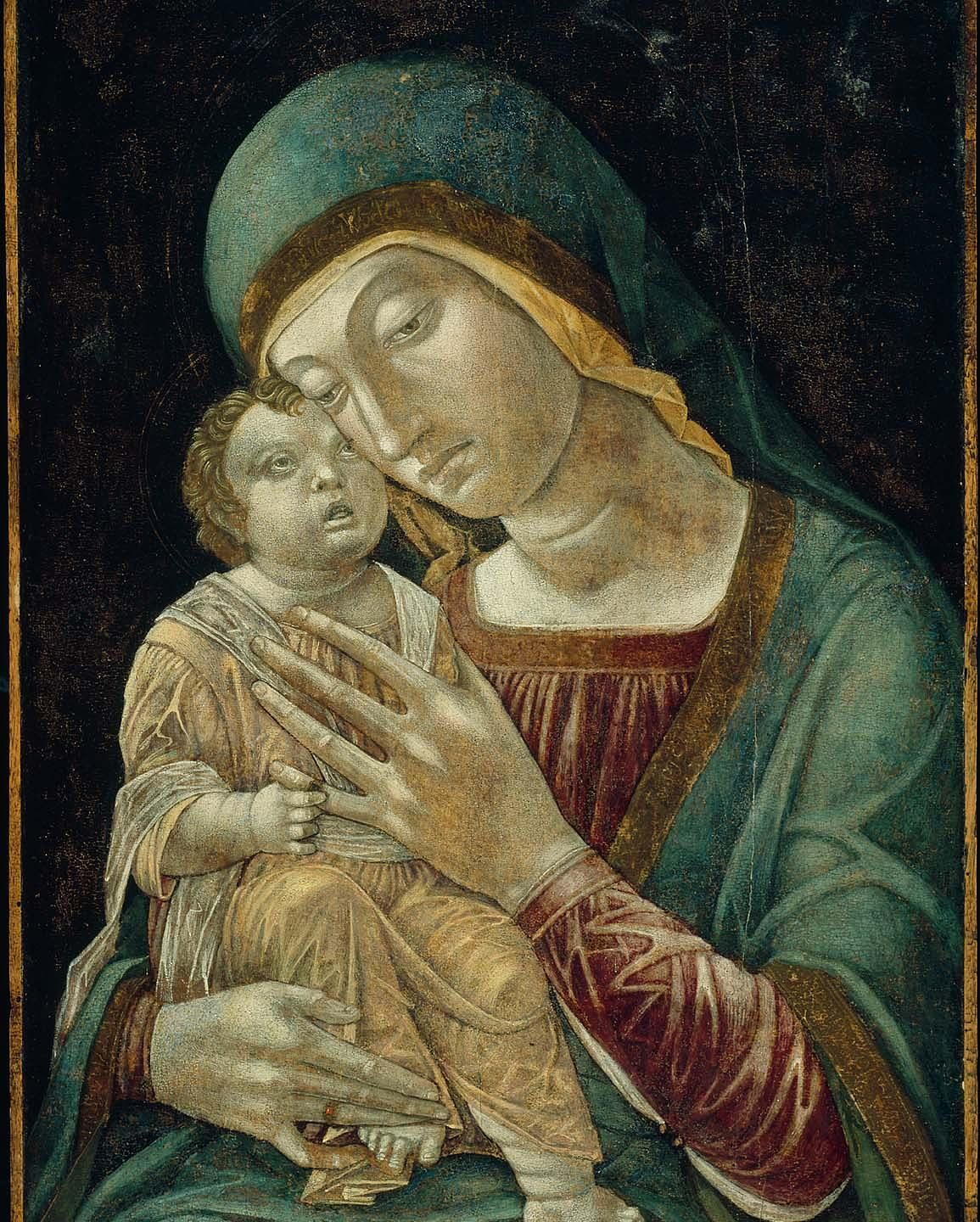Some children see Him lily white,
the baby Jesus born this night.
Some children see Him lily white,
with tresses soft and fair.
Some children see Him bronzed and brown,
The Lord of heav’n to earth come down.
Some children see Him bronzed and brown,
with dark and heavy hair.Some children see Him almond-eyed,
this Savior whom we kneel beside.
some children see Him almond-eyed,
with skin of yellow hue.
Some children see Him dark as they,
sweet Mary’s Son to whom we pray.
Some children see him dark as they,
and, ah! they love Him, too!The children in each different place
will see the baby Jesus’ face
like theirs, but bright with heavenly grace,
and filled with holy light.
O lay aside each earthly thing
and with thy heart as offering,
come worship now the infant King.
‘Tis love that’s born tonight!Many will recognize this poem as the text of “Some Children See Him,” a Christmas song by Wihla Hutson and Alfred S. Burt. The song is a touching reminder that God’s love transcends race, and that his son, Jesus, the infant King, was sent for all the world’s people—to redeem us all from Adam’s curse. Praised be Jesus Christ, now and forever!
We are all created in God’s image. The Imago Dei is not bound to any one nationality or race, or to one’s ability or disability, wealth or poverty, talent or skill. Jesus is “the image of the invisible God,” the imago Dei invisibilis, and “the first-born of all creation” (Col. 1:15). Every person in the world shares this image as a pure gift. As God said, “Let us make man in our image, after our likeness” (Gen. 1:26). And so it was and has been, from Adam to all persons, from that first moment of creation until now.
Sacred art has handed down some special gifts to these people who are often cast aside.
Christmas reminds us that the beautiful mystery of the Incarnation promises to restore the luster of our dignity tarnished in Eden. Tragically, we live in a time that has replaced the Imago Dei with the Imago Hominis, the image of men. The source of human dignity, the Christ child in the manger, has been cast aside—forgotten and disrespected. It has been replaced by our demonic quest to supplant the divine image with the idol of human perfection. Many who are deemed less than perfect, who aren’t seen as adding value to society, are not included. Their dignity is denied—their lives devalued and even eliminated.
Christmas is our yearly reminder that the child in the manger, weak and helpless as he is, is the first-born of all creation (Col. 1:12), and we, therefore, by our adoption in Baptism, are his siblings and share in his royal lineage. We are all descendants of the King and bear the Imago Dei, the image of God in our whole being. Yes, even those who some deny add value to society because of their disability, poverty, age, etc.
Sacred art has handed down some special gifts to these people who are often cast aside. In one example, it is possible that a fifteenth-century Italian painter decided to include an individual with Down syndrome in one of his paintings. The features of the Christ child resting in the loving arms of the Blessed Virgin Mary strikingly resemble a child with Down syndrome. We don’t know the artist’s name, only that he was a follower of a better-known artist, Andrea Mantegna. The painting you can see reproduced here is in storage at the Museum of Fine Arts in Boston.
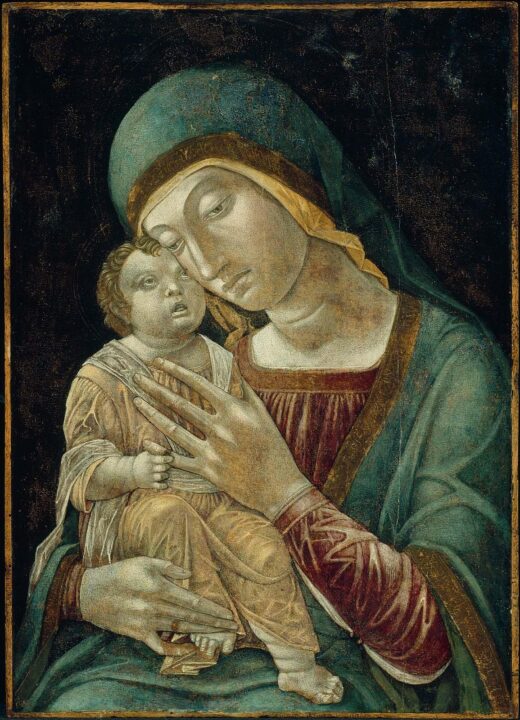
Word on Fire Institute member Dr. Brian Skotko is an expert in Down syndrome and has viewed the painting on three different occasions. At his last visit, he decided it was doubtful that the child has Down syndrome. He’s probably right. Perhaps the familiar features can be attributed to the artist’s technique, but the features are still there, and we don’t really know for sure either way. Uncertainty opens the door widely to preference, and I prefer to believe—especially as we near the Nativity of Our Lord—that this anonymous artist had an affection for a child with Down syndrome and painted him into this beautiful work of art. How meaningful this image can be for some children with Down syndrome in 2023, to see him or herself in this 500-year old artist’s work. Their savior is depicted with their same almond-shaped, upward slanting eyes and the same space between their big and second toe.
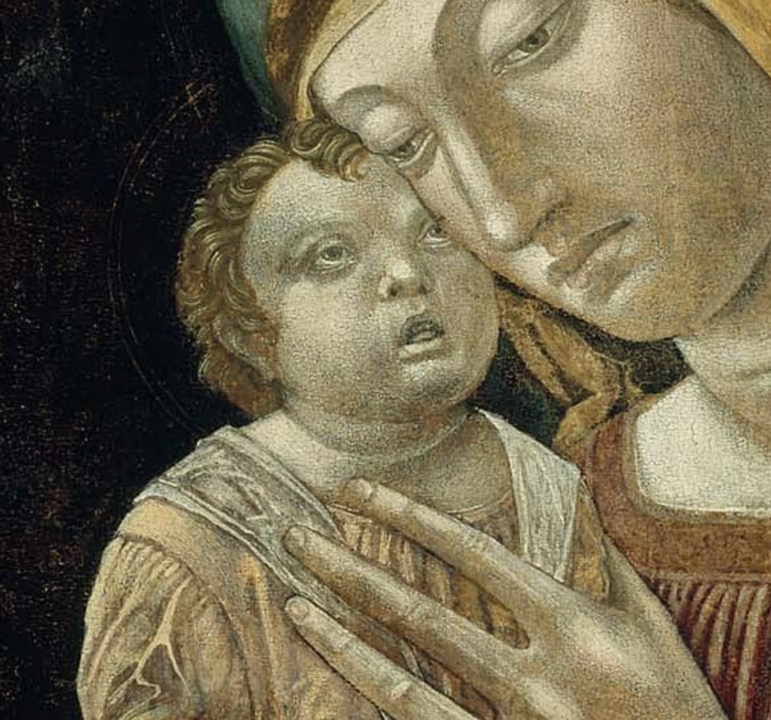
There is another painting by an early-sixteenth-century Flemish artist that brings a special angel and shepherd to the Adoration of the Christ Child. Once again, we don’t know the name of the artist, only that he was likely a follower of Jan Joest of Kalkar. In this work, individuals who more distinctively appear to have Down syndrome are found adoring the newborn King. An interesting detail, noted by Mark Leach, is that “the shepherd is standing behind a wall, peering into the scene through two columns of a window. [He] is shut out of the scene—he is not included or invited into the stable to join in the adoration of the Christ Child, but he inserts himself into the scene, adoring nevertheless.” In contrast, Mark notes that the angel who seems to have Down syndrome is seated right next to the Blessed Virgin Mary, kneeling as he adores the baby Jesus. Perhaps the artist is making a statement by contrasting the attitudes of acceptance between heaven and earth. Mark writes that “a possible message conveyed in the painting is the continued struggle of parents, advocates, and those who care about human rights to break down the wall of exclusion so that all are included in our society.” It’s an interesting thought. Maybe things weren’t too different then from the way they are now.
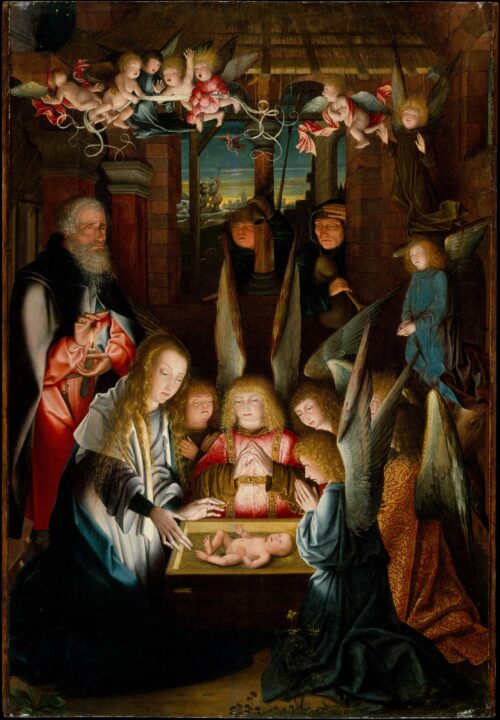
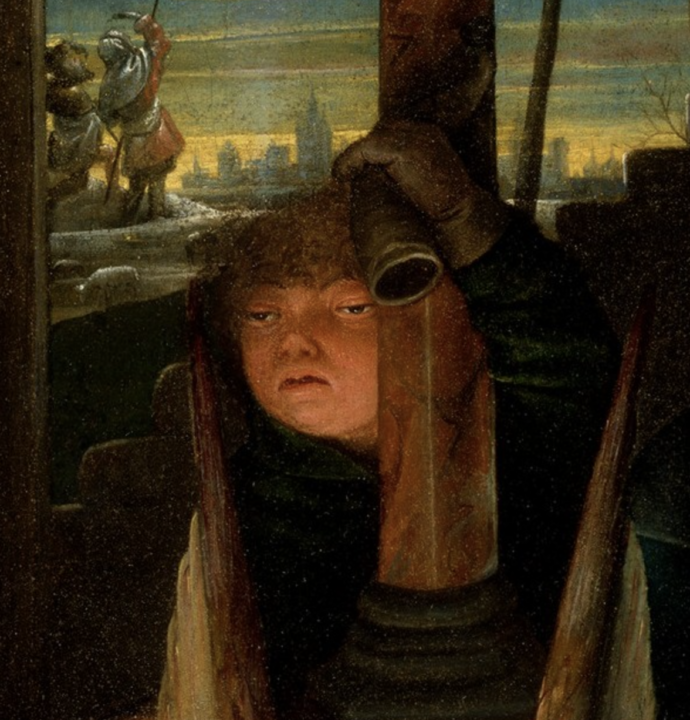
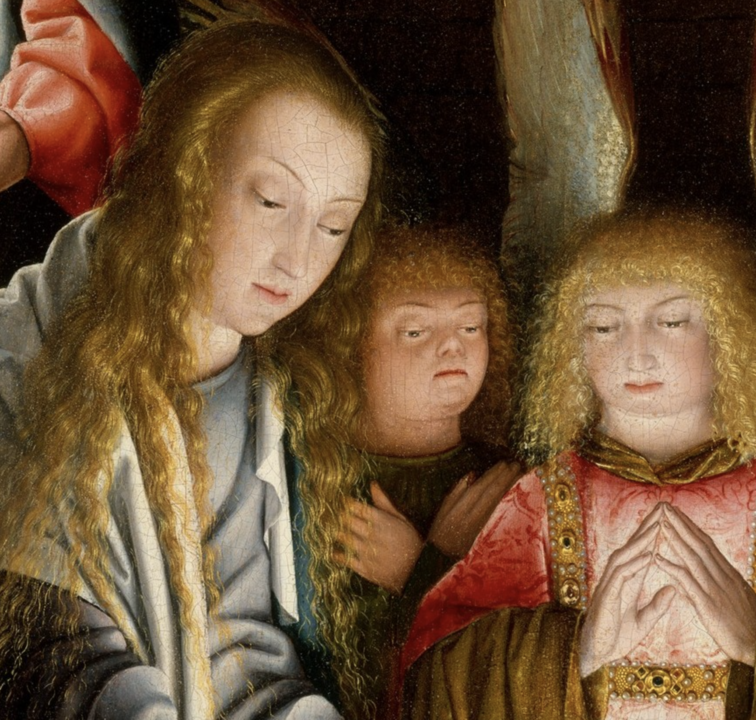
These two paintings from the fifteenth and sixteenth centuries raise many questions about how disability was viewed in history. How common was it, and how were persons with disabilities viewed and accepted in society? Of course, there were no medical diagnoses nor were there the categories of disability that we have now. Most likely, the mortality rate was much higher, too, in the absence of the advanced treatments for co-occurring medical conditions that accompany many disabilities. We’ll investigate that question in 2024.
Setting those questions aside for another day, individuals living with Down syndrome and other disabilities have a special gift. They can rejoice in the birth of Jesus on Christmas Day and see in the Holy Child’s face, the Imago Dei, someone that looks very much like them.
